The Secret to Dreamy Portraits

I have often discussed my love of dreamy golden light here on my blog. Many of my brides come to me knowing about Golden Hour, likely because they’ve been following my work for a while. But if you’re just stumbling upon my site and are wondering what Golden Hour is, then this post is for you!
What is Golden Hour?
Golden Hour is the hour before the sun sets or the hour after the sun rises. It’s that time of day when the sun is closer to the horizon. During this time of day, shadows become softer because the sun is at a lower angle to earth. The sun seems to glow and turn more golden as it approaches the horizon. This is why photographers will refer to this time of day as Golden Hour. Another name for Golden Hour is Magic Hour, which I think is totally appropriate because Golden Hour light is often MAGICAL!
All light from the sun is natural light. It’s the light God gave us. But all natural light is not the same. Midday sunlight has a completely different look and quality than Golden Hour light. When unobstructed by clouds, midday sunlight is harsh and very bright. It bounces off all surfaces, causing both color casts and making us squint our eyes.
Additionally, morning Golden Hour light has a slightly different quality than evening Golden Hour light. I’m definitely not one jumping out of the bed to shoot at sunrise (night owl over here!), but I have done so once or twice in the past. In the early morning light, the overnight dew hangs in the air, catching the light in a way that doesn’t happen in the evening Golden Hour. So yes, even though the hour after and before sunset are both Golden Hour times of day, they are each unique from one another.
I love shooting during evening Golden Hour. For this reason, I always schedule portrait sessions during this time of day and love when we can take bride and groom portraits during this window of time on a wedding day.

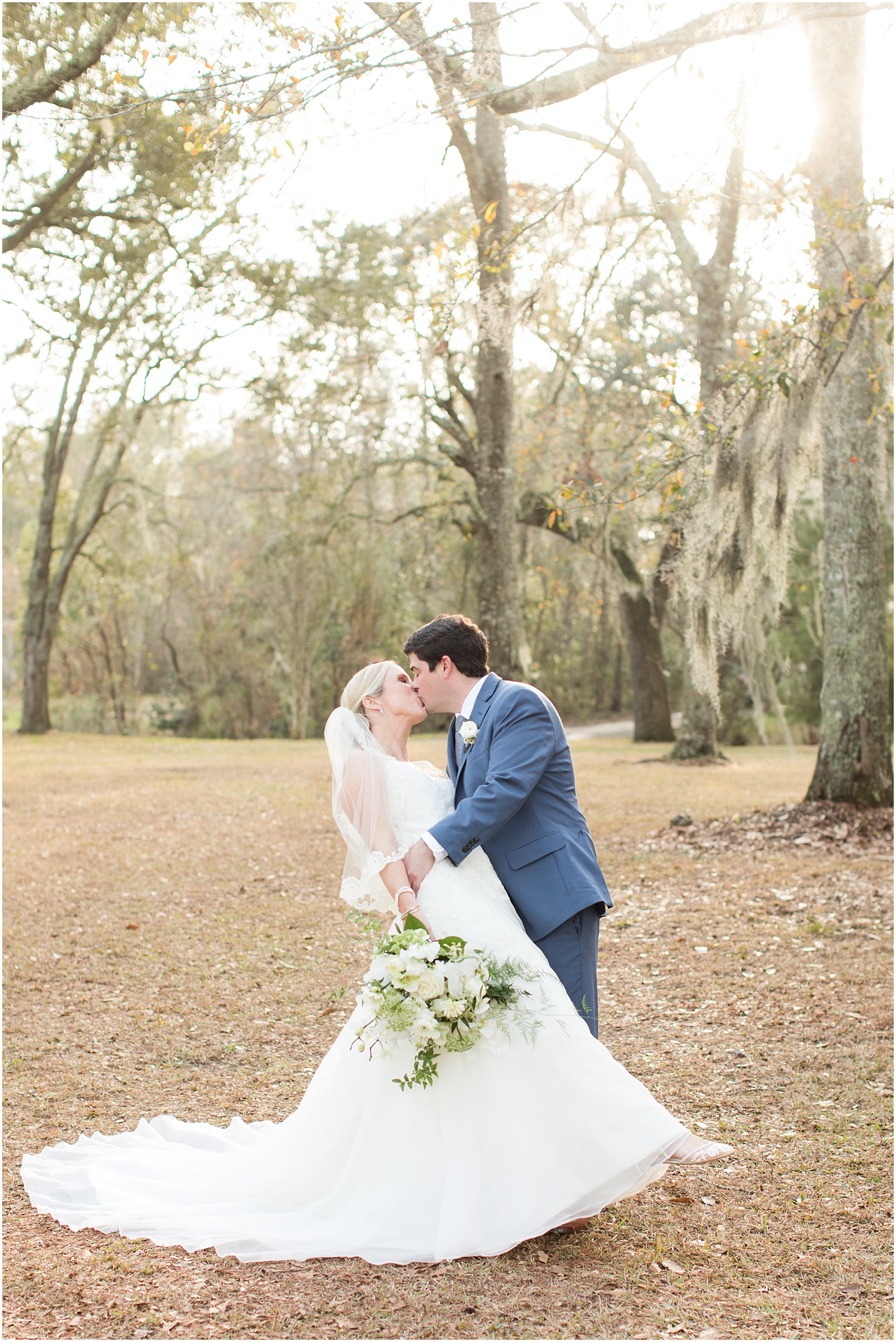
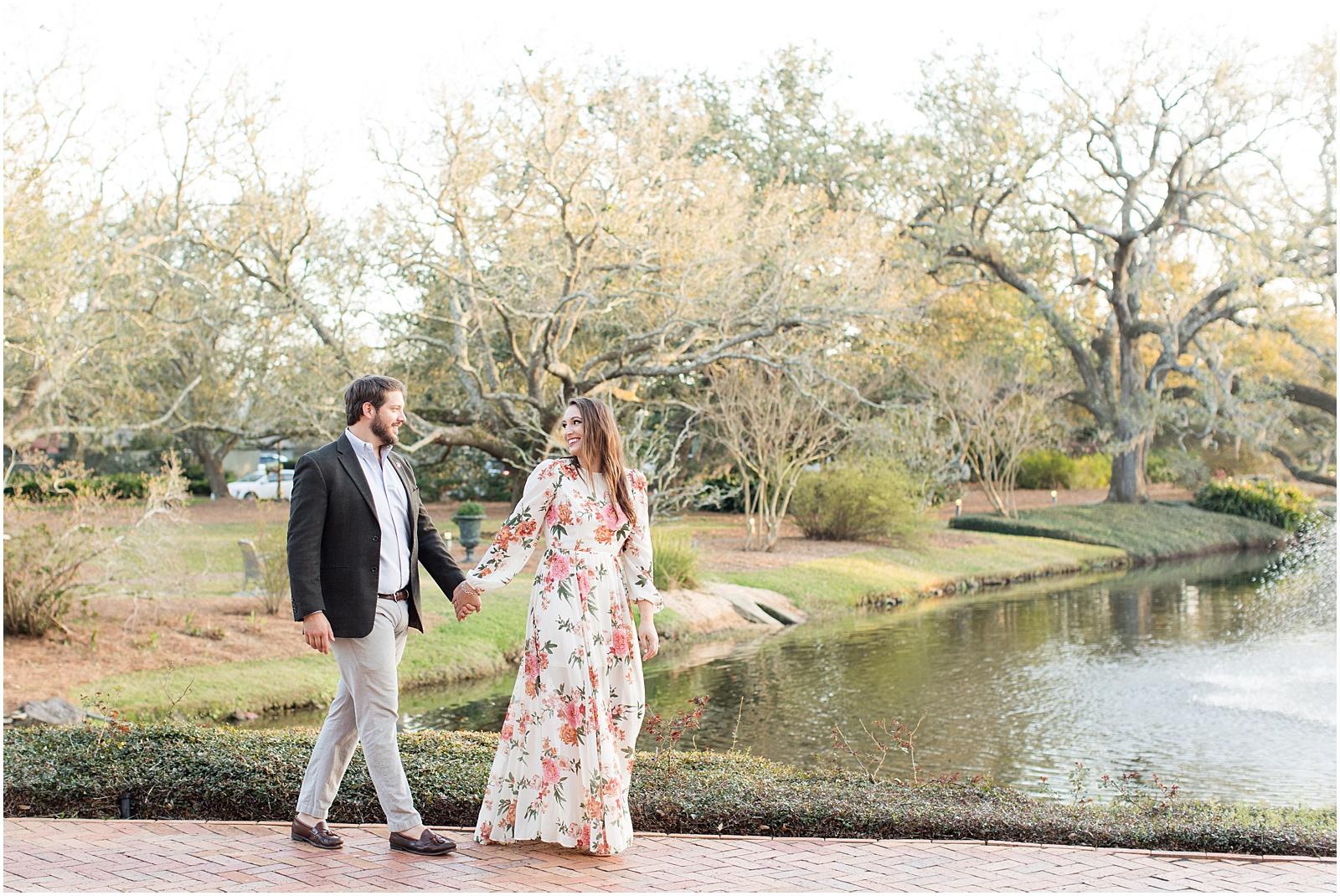
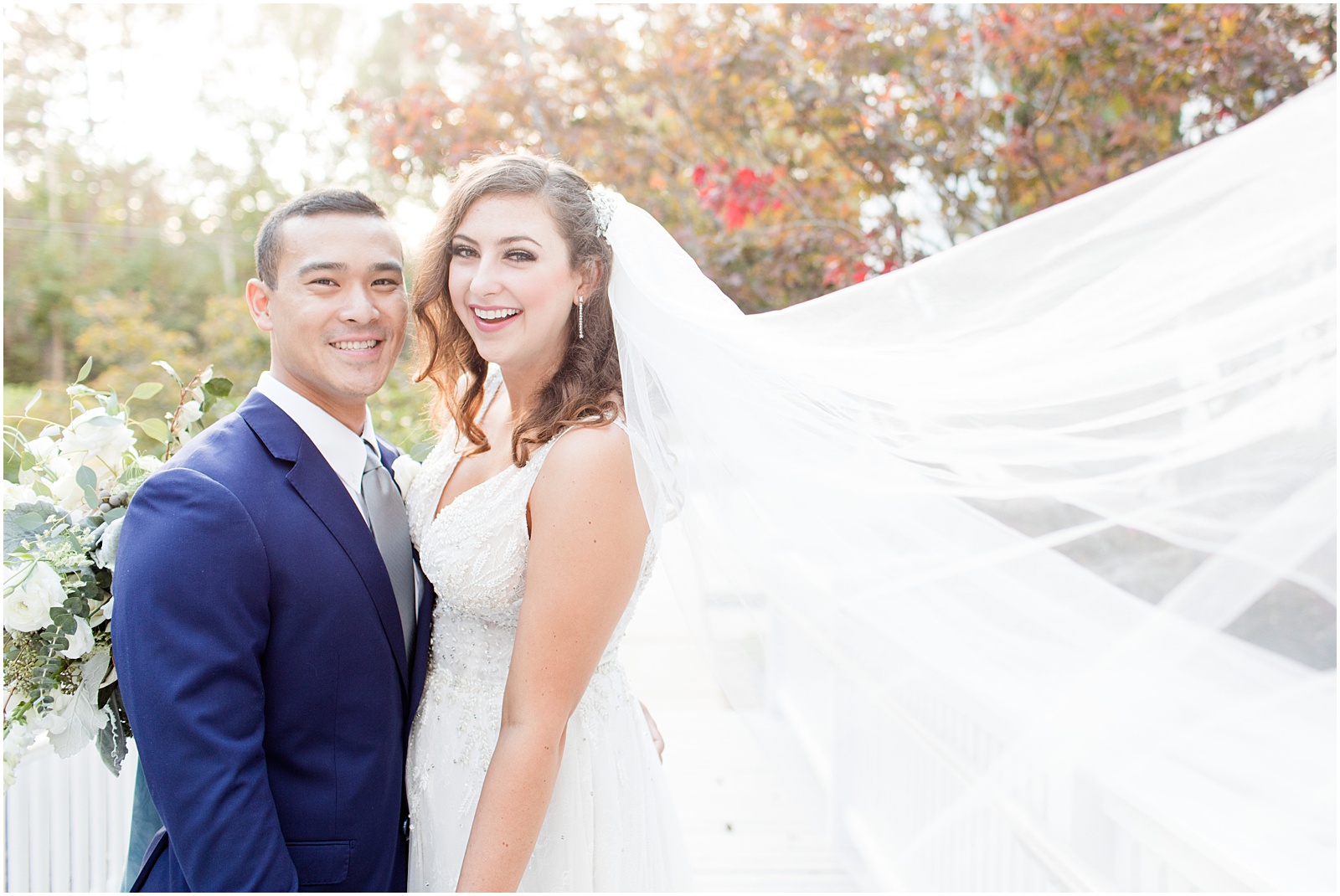
Just Look at that Glow!
I get so excited whenever I see the glow of golden hour light, but sometimes that glow gets filtered by the clouds. The amount of glow during Golden Hour is directly dependent on two things – the amount of clouds in the sky that day and what is between the sun and my subjects.
Here on Mobile Bay we are used to the weather changing abruptly. We can endure an afternoon thunderstorm in the early afternoon and end up with a beautiful evening by the time Golden Hour rolls around. Our proximity to the water means that there is a lot of moisture in the air and a ton of humidity. Sometimes it looks like we’re going to not get any glow for a session, but then just as we’re getting close to sunset, the sun will dip below the clouds, bathing everything in the golden glow.
My favorite way to capture the Golden Hour glow is when the light is streaming through a giant oak tree, or other element that will let in the light, but still keep it from hitting my subjects directly.

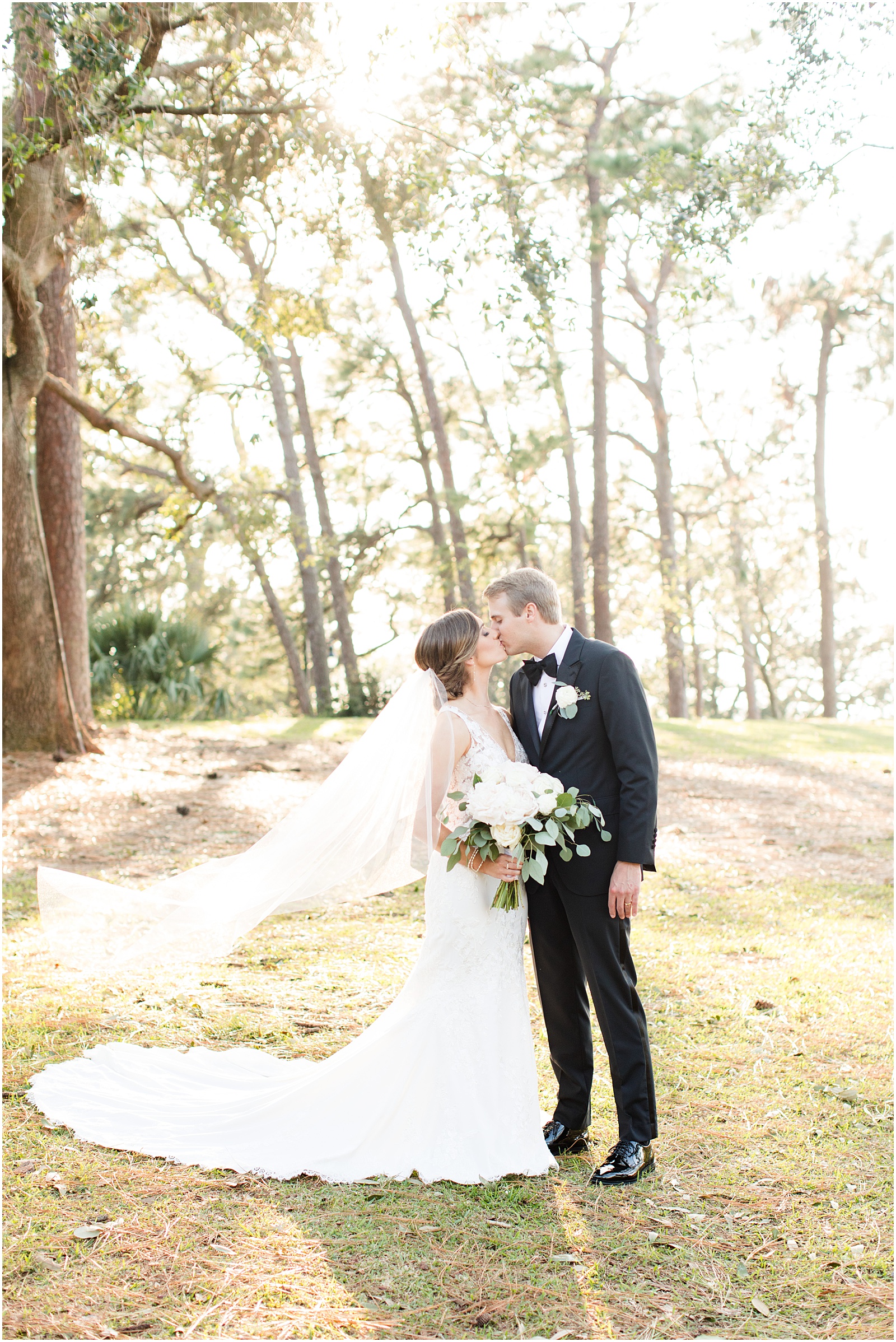
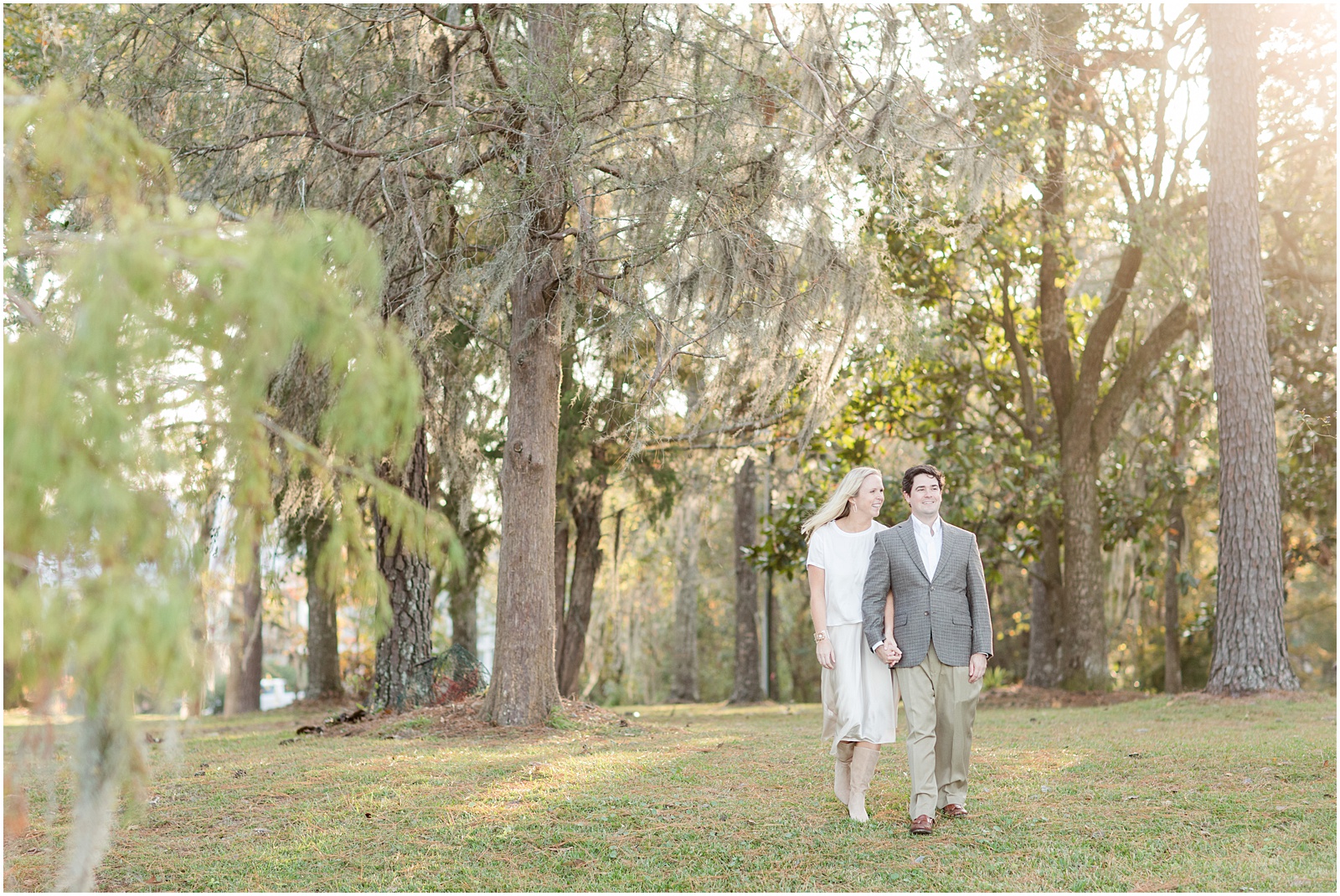

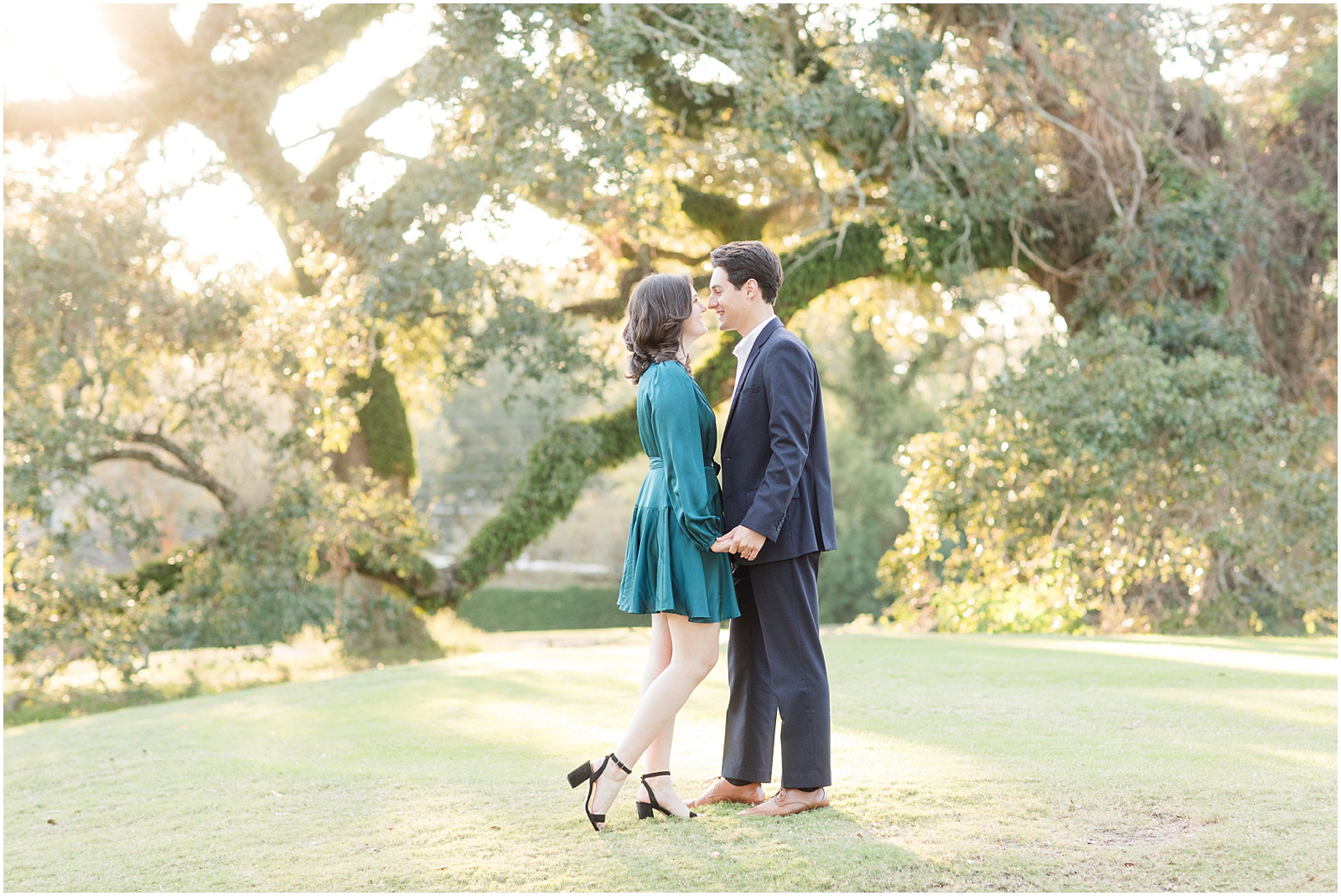
How Water Affects Golden Hour
At Golden Hour, water becomes magical as well. The golden glow of the sunlight won’t be hitting the water as directly, which means it also takes on a softer quality. This creates the perfect recipe for capturing reflections! I am always looking for opportunities for reflection shots. It’s something my eye has always naturally been drawn to. When I find a reflection opportunity that also has amazing Golden Hour glow, I’m one happy photographer!

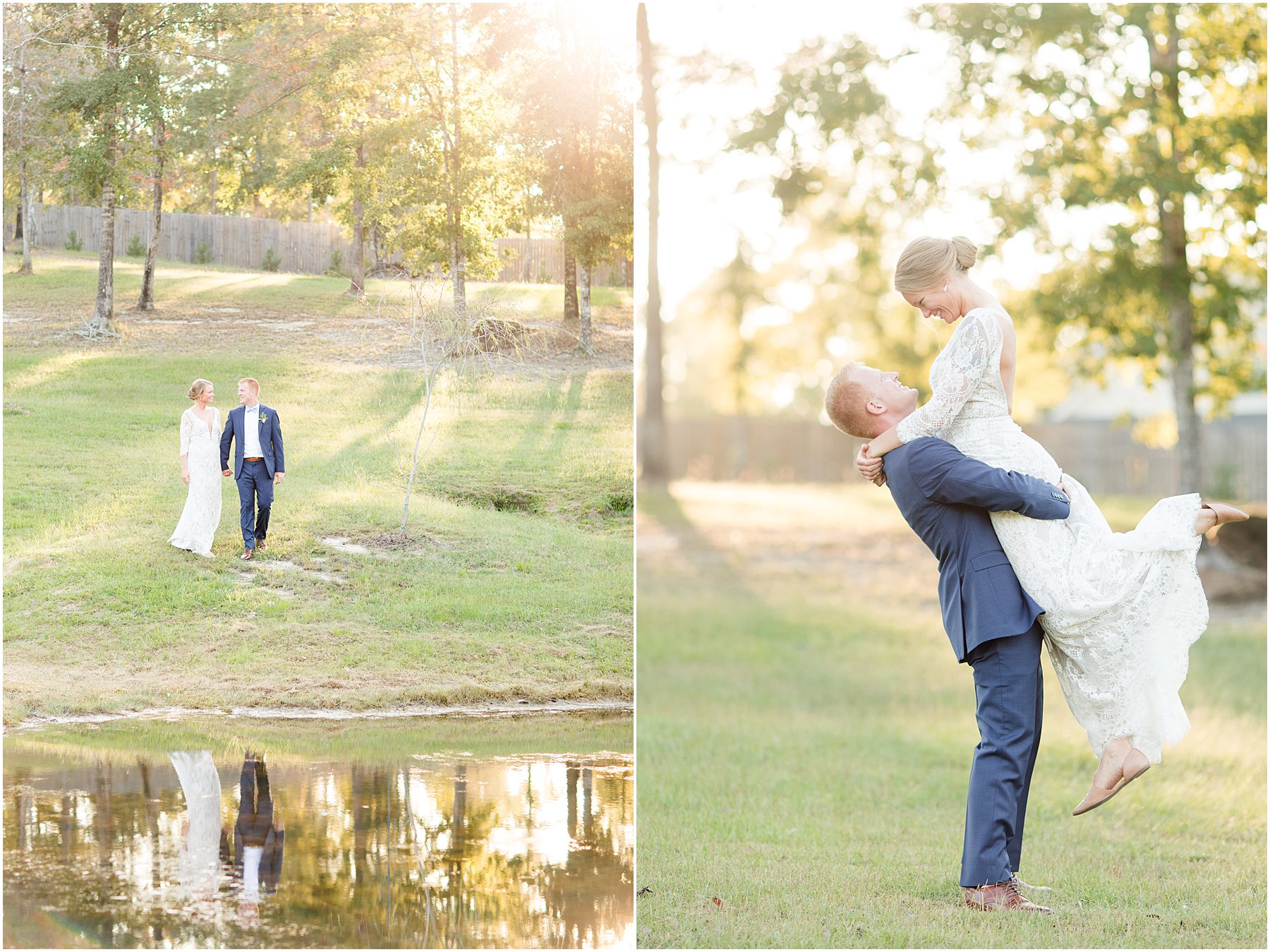

Open Fields + Buildings
The location affects the quality of natural light at all times of day, but especially during Golden Hour. Depending on the location, the opportunity to really capture that glow may come slightly earlier than that one hour before sunset mark. This is especially true when I’m shooting at a location surrounded by a lot of trees.
This means I have to be aware of where I’m shooting at any particular time of day. For example, I know that when I’m at The Bragg-Mitchell Mansion, the dense oak tree shade will give me an opportunity for Golden Hour glow a bit earlier than the one hour mark. But, if I’m shooting at Oak Hollow Farm, I may need to wait a bit closer to the sunset mark to get a wide open field shot with dreamy light. If I’m in downtown Mobile, the opportunity to catch the glow will be different depending on which street I’m shooting on because of the different building heights.
It’s a lot of factors to consider, but this is what is rolling through a photographer’s mind when they’re selecting where to shoot during any particular time of day. Where is the sun and how is my location going to affect the quality of light?

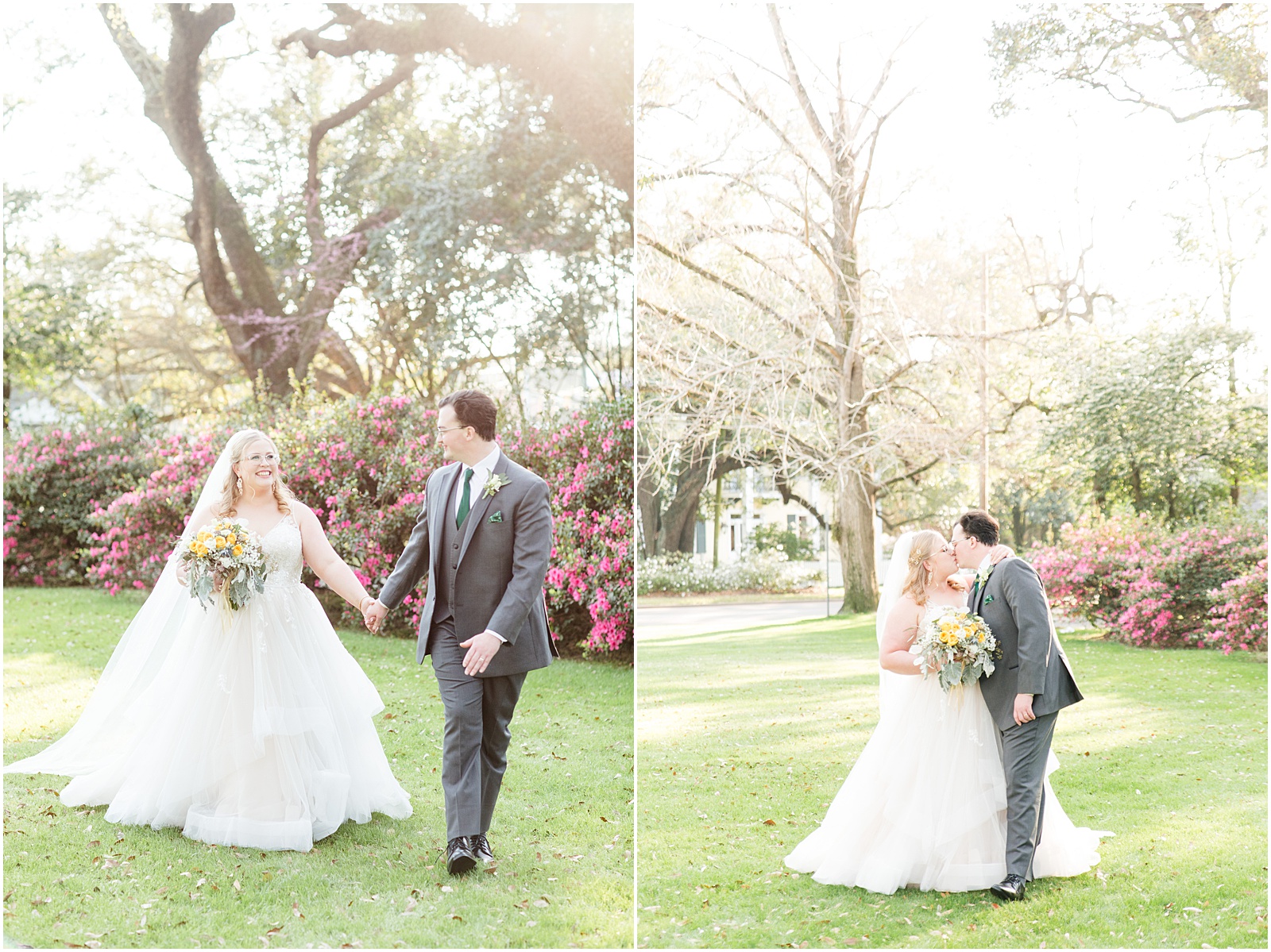
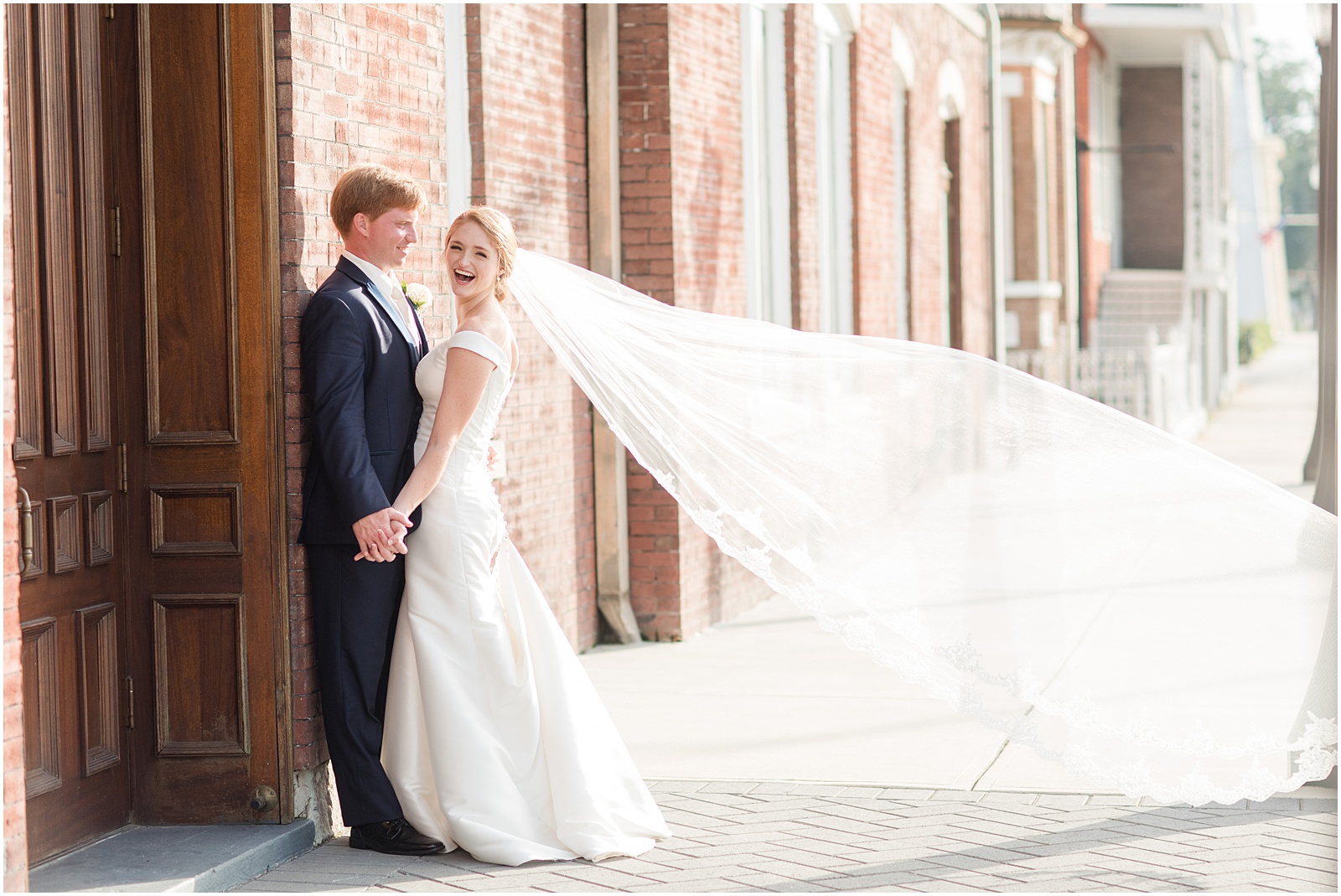
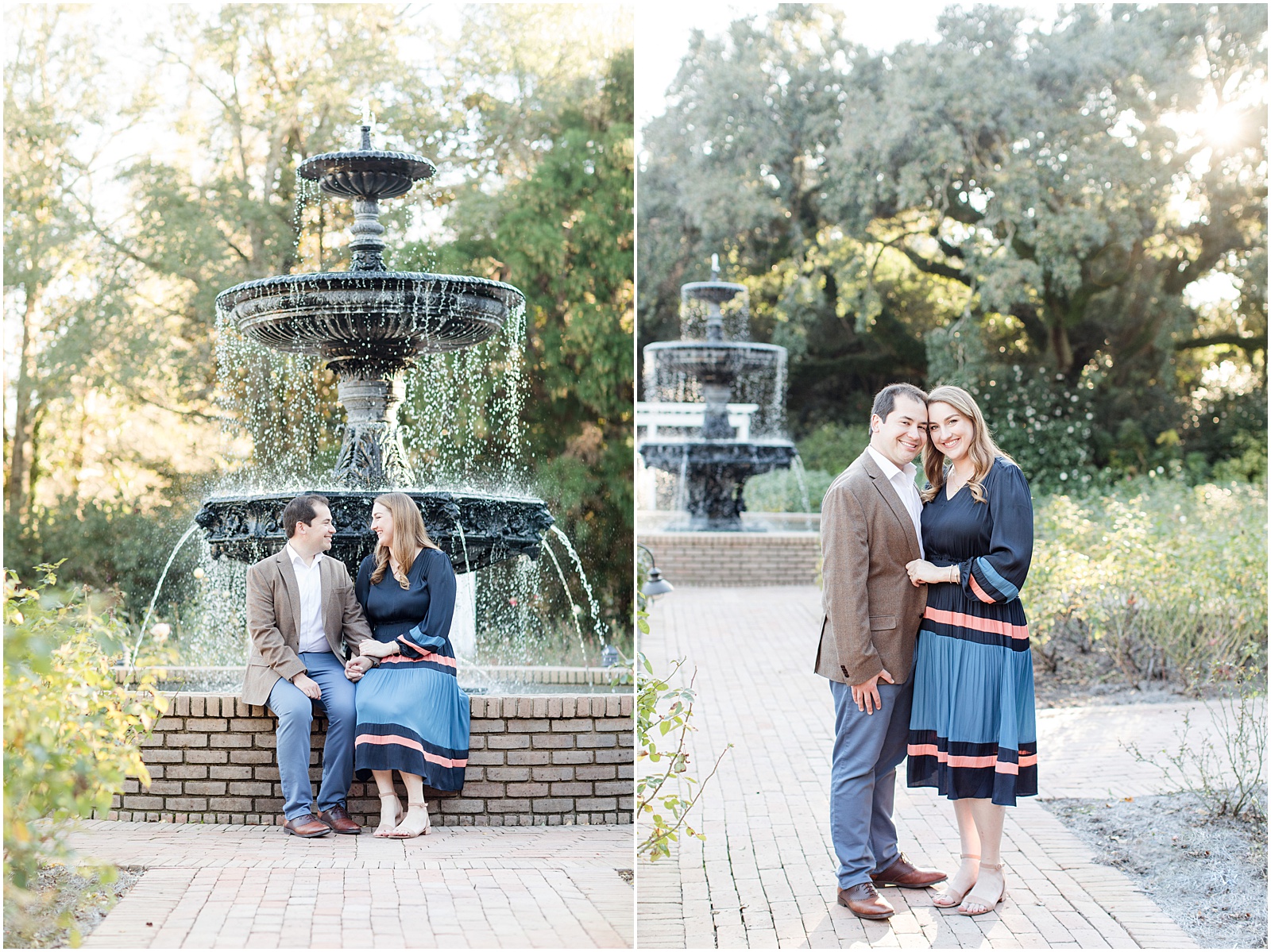
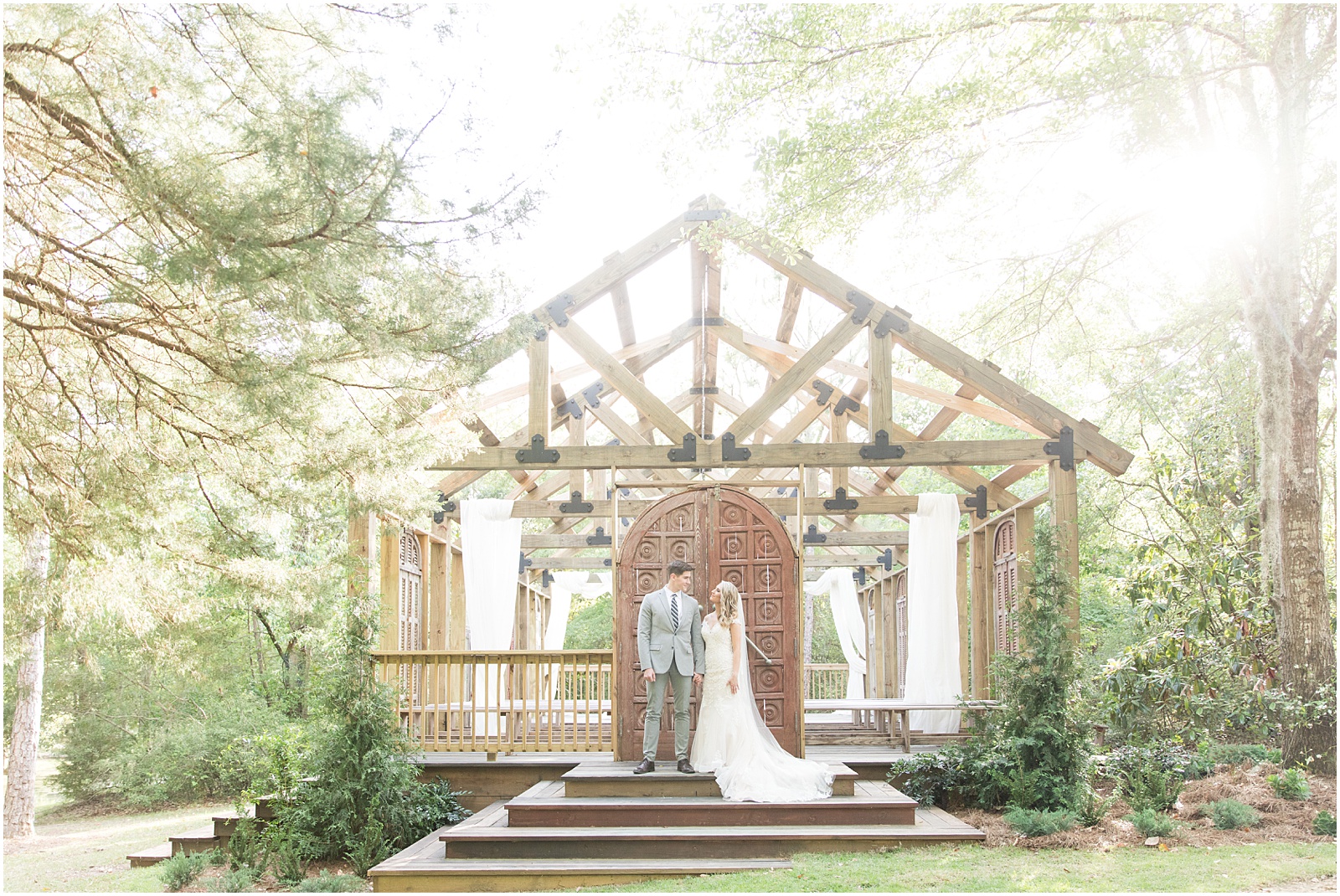
What about Blue Hour?
I’ve been talking about Golden Hour for this whole post, so you’re probably wondering what in the world Blue Hour is and why I’m bringing it up now. The simplest answer is that I live near the water and frequently shoot on the bay and sometimes at the beach. During Golden Hour, these locations have direct access to the sun. This means that if I take photos of my clients in these open spaces before sunset, they’re going to be hit with that orange glow from the sun, which is not great for natural looking skin tones or portraits where my clients have their eyes open.
Blue Hour is the brief period of time after the sun sets when the light lingers. It’s often when the sky looks it’s best too! At this time of day I can turn my subjects to face where the sun was, letting that lingering reflection of sunlight light their faces and the scene behind them. Since I’m shooting with mostly natural light in these scenarios, this lets me capture the sky and water in a way that looks very much like a watercolor painting…my absolute favorite look for portraits near the water!
The only down side to Blue Hour light is that it is an extremely brief period of time. The amount of time the light lingers varies depending on the season. In the summer we get a longer lingering of light than we do in the fall. How sunny, or cloudy, the day was also has a direct effect on blue hour. If it was a heavily cloudy day, it’s likely we’ll miss blue hour all together, but that’s ok because it means we can shoot on the water earlier due to the clouds acting like a big diffuser in the sky.

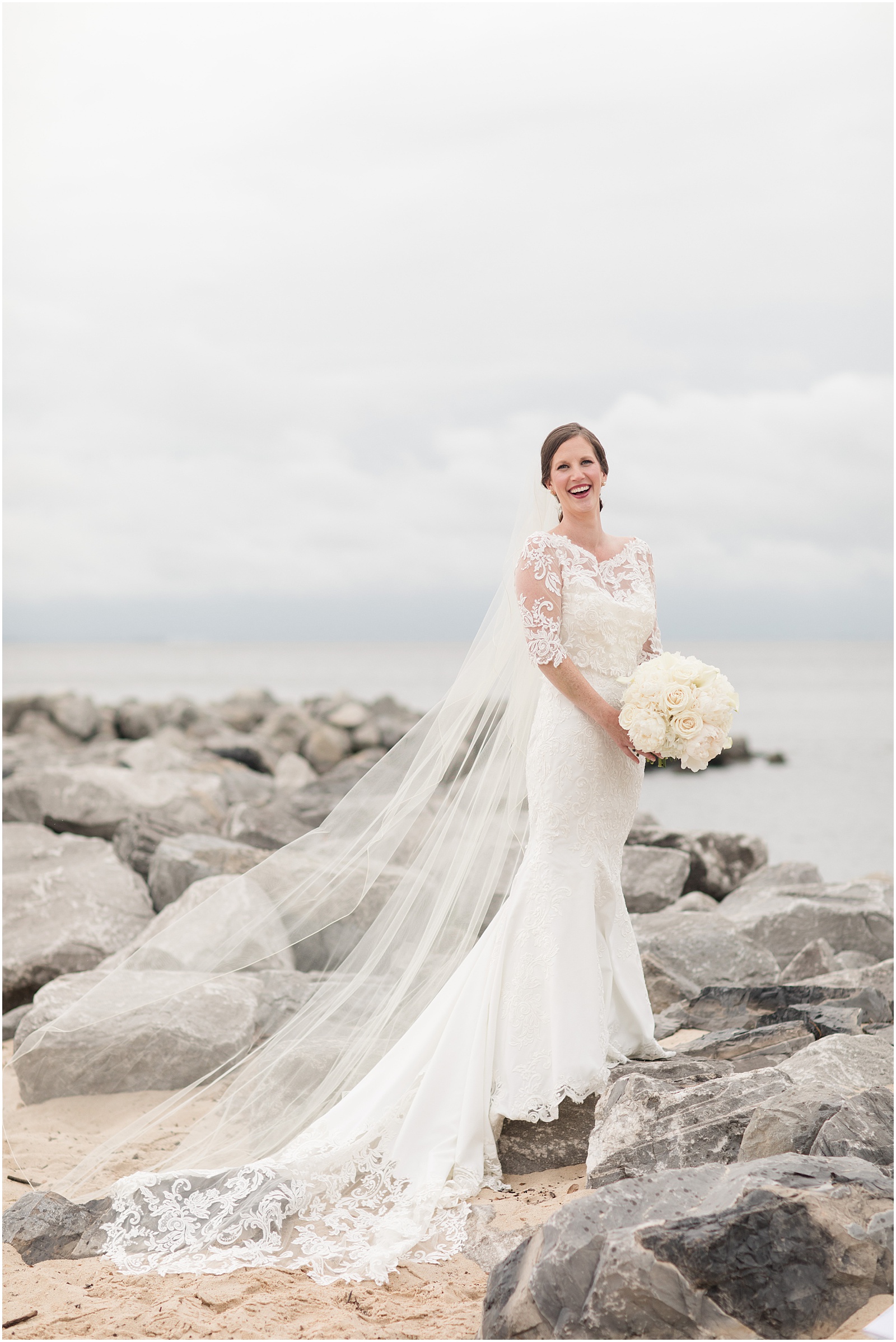
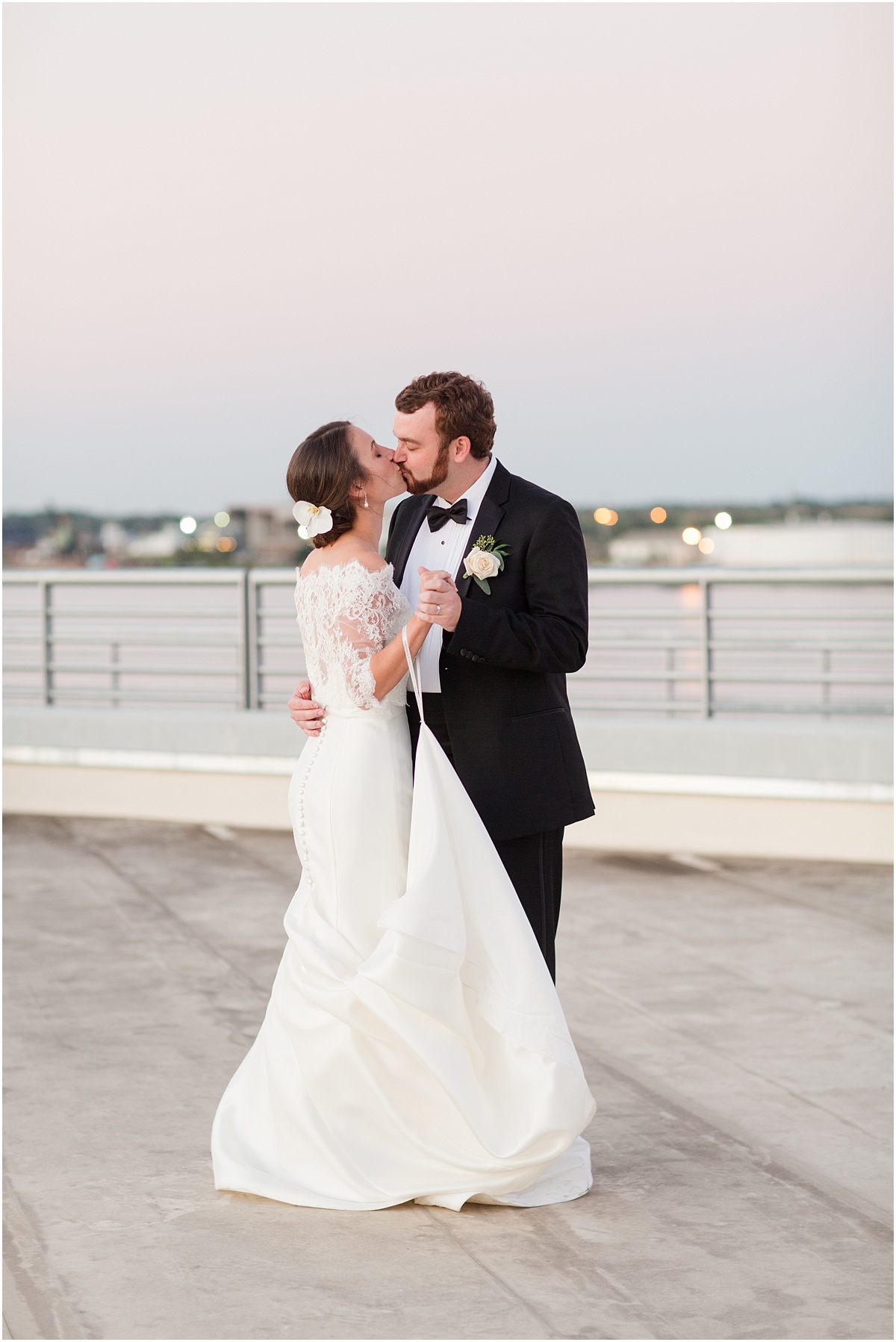

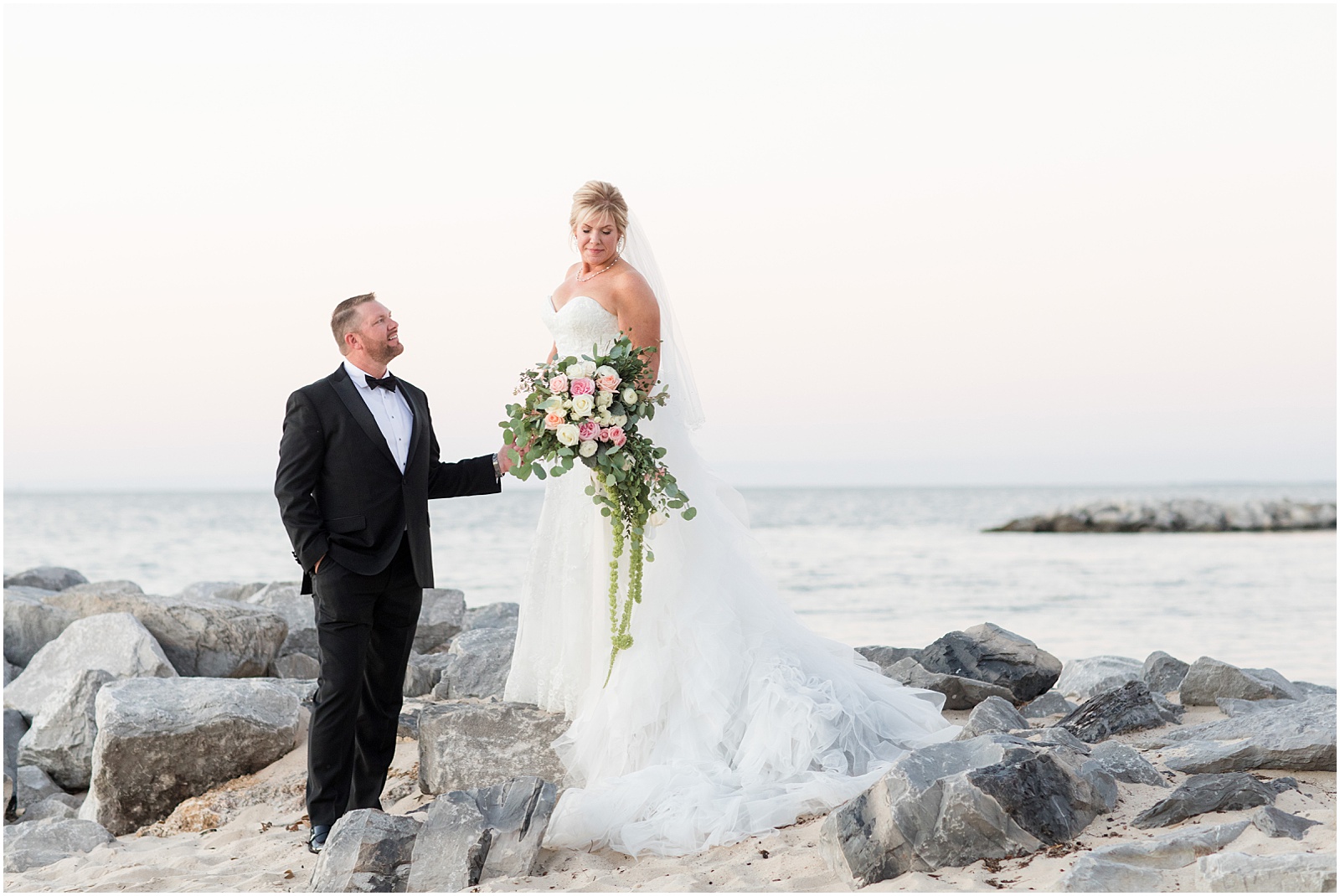
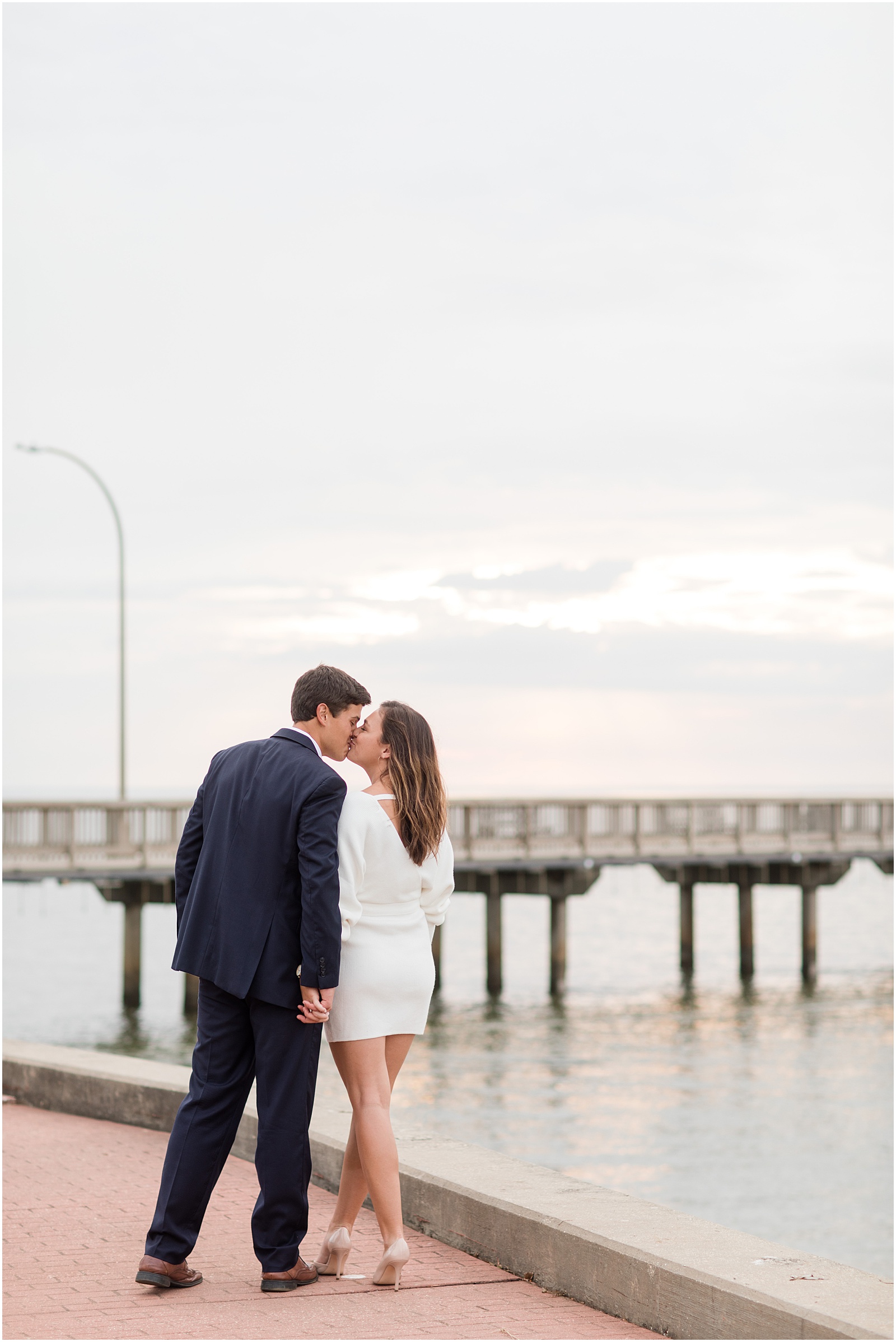
Golden Hour vs. Blue Hour Comparison
Seeing the difference between Golden Hour and Blue Hour can best be seen by comparing portraits taken just before and just after the sun sets. Just before the sun sets, I keep the sun behind my couple, as in this first shot of my sister and brother-in-law. We can see the Golden glow hitting the back of their heads and the grass in the background.

Just a few minutes later, the sun had dipped completely below the horizon and I turned Katherine and Phillip to face where the sun had been before it set in order to capture the soft colors of the water and the sky.

Golden Hour versus Blue Hour on Julie and TJ’s wedding day.
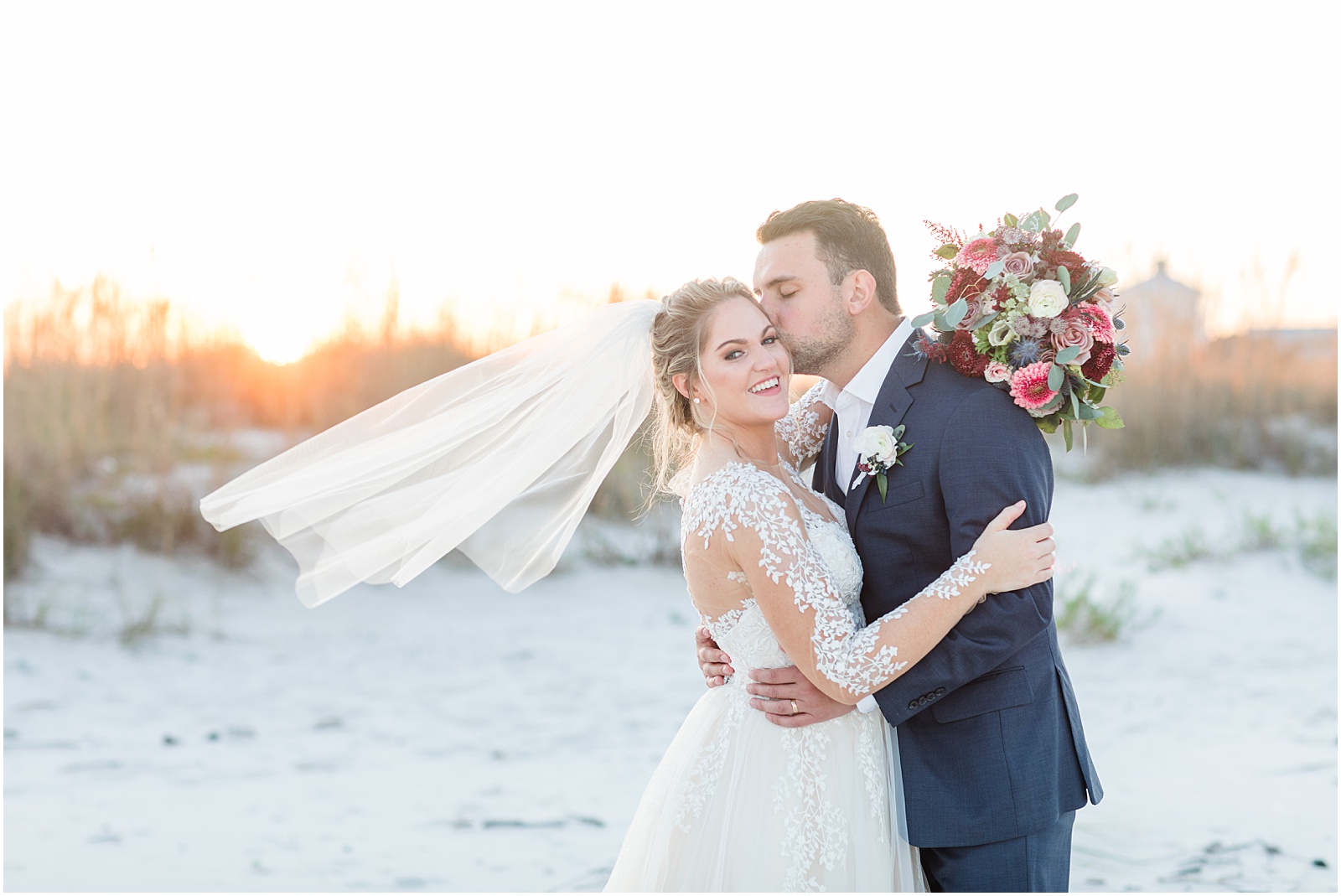
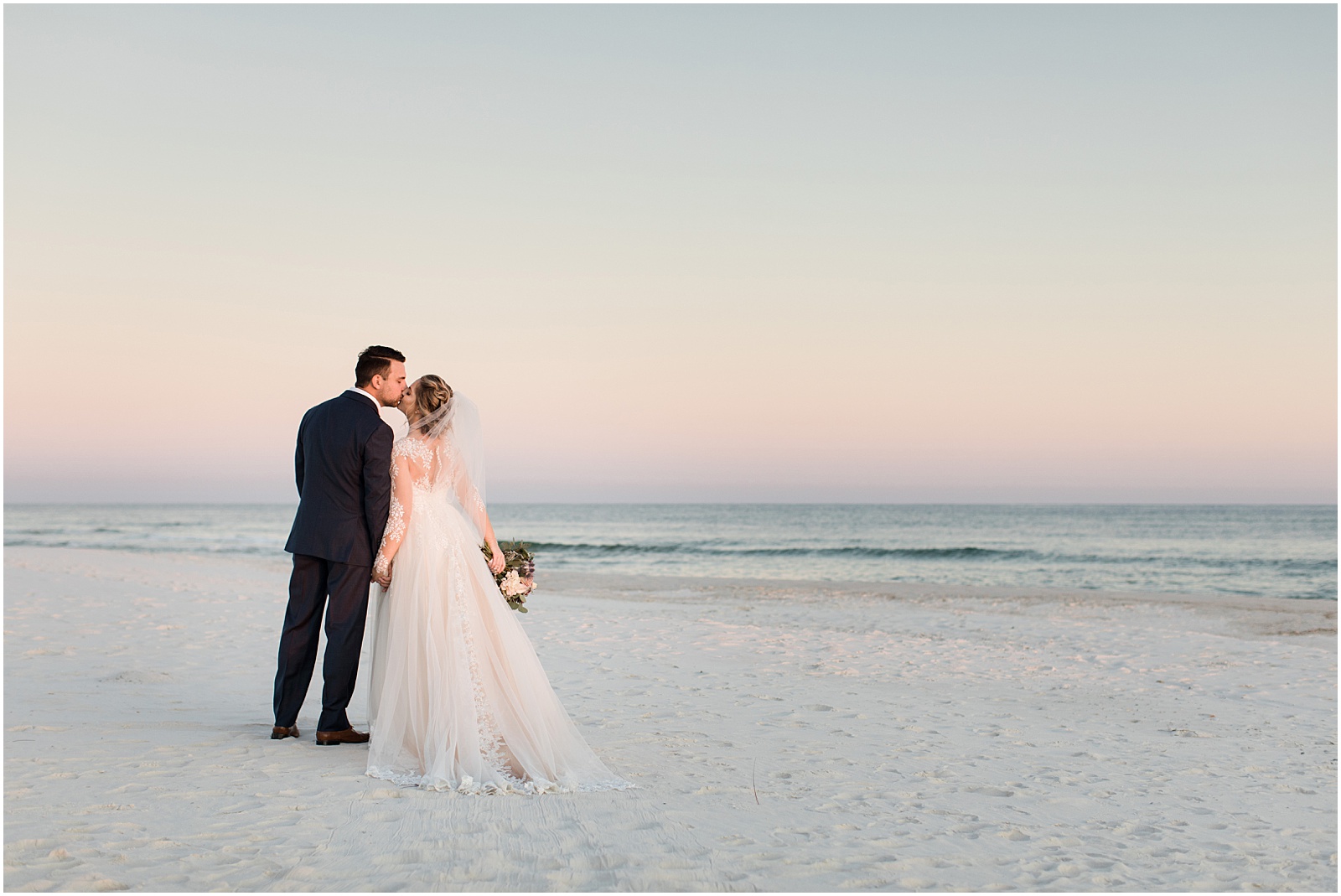
Here’s another Golden Hour versus Blue Hour comparison from Jessica and Quentin’s engagement session.

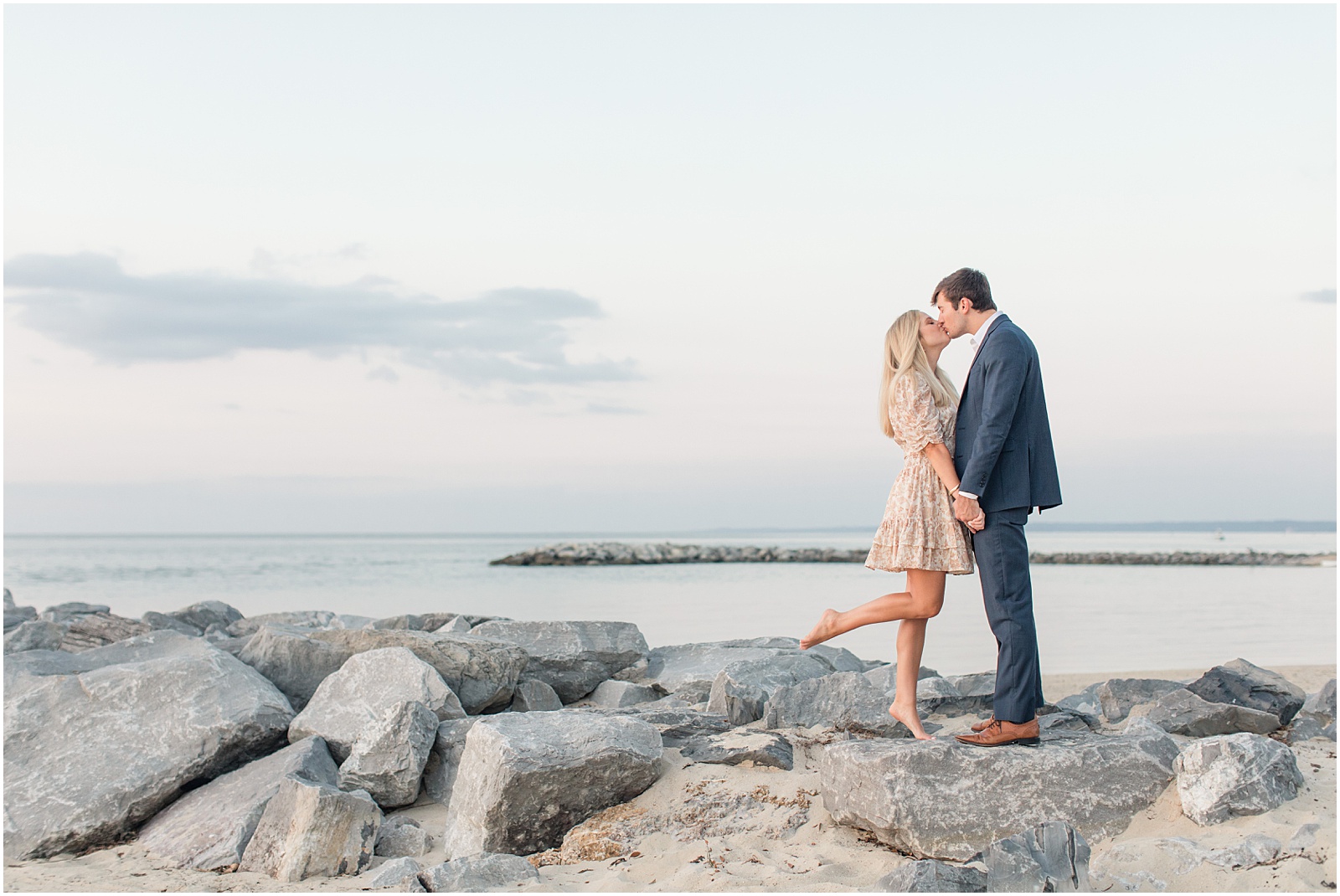
Finally, here’s what Golden Hour can look like at the beach when it’s an overcast day.

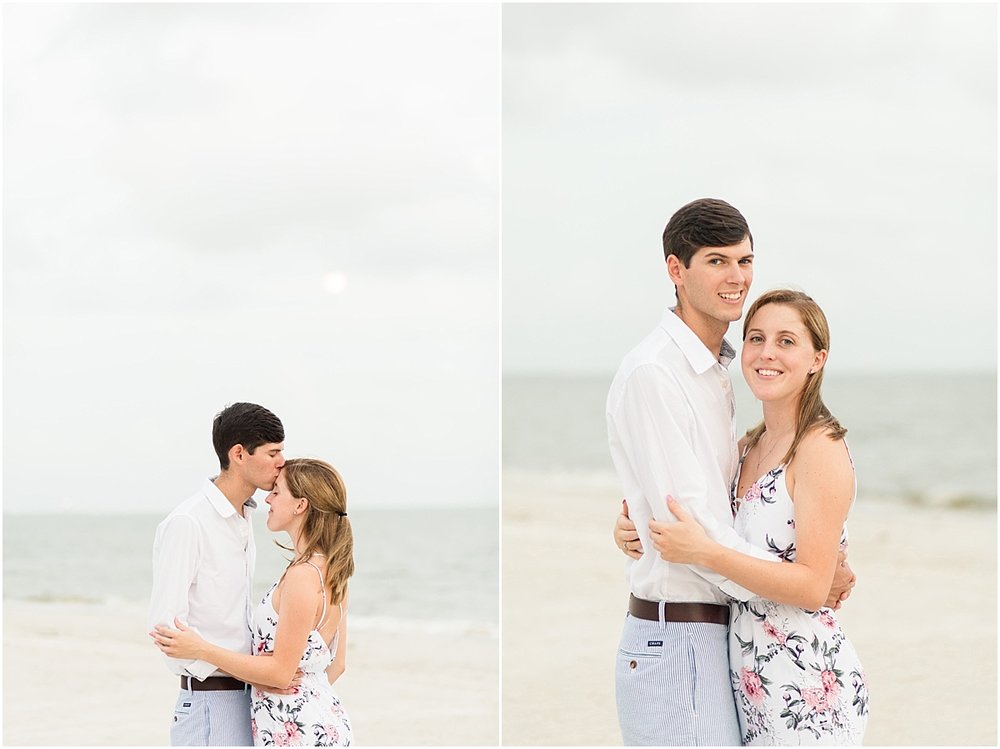
Golden Hour light is one of my favorite types of light because it’s naturally dreamy! On portrait session days, we can plan to shoot completely around the sunset for the optimum Golden Hour window. But, if you want dreamy portraits on your wedding day, remember to consider the sunset and when Golden Hour will be before setting your ceremony time, as well as before you make a final decision on wether or not to share a First Look. These two decisions directly affect whether or not we will be able to work Golden Hour portraits into your wedding day! While we can’t control the weather, we can accordingly depending on the season and sunset time to hopefully get you those Golden Hour portraits you’re dreaming of!
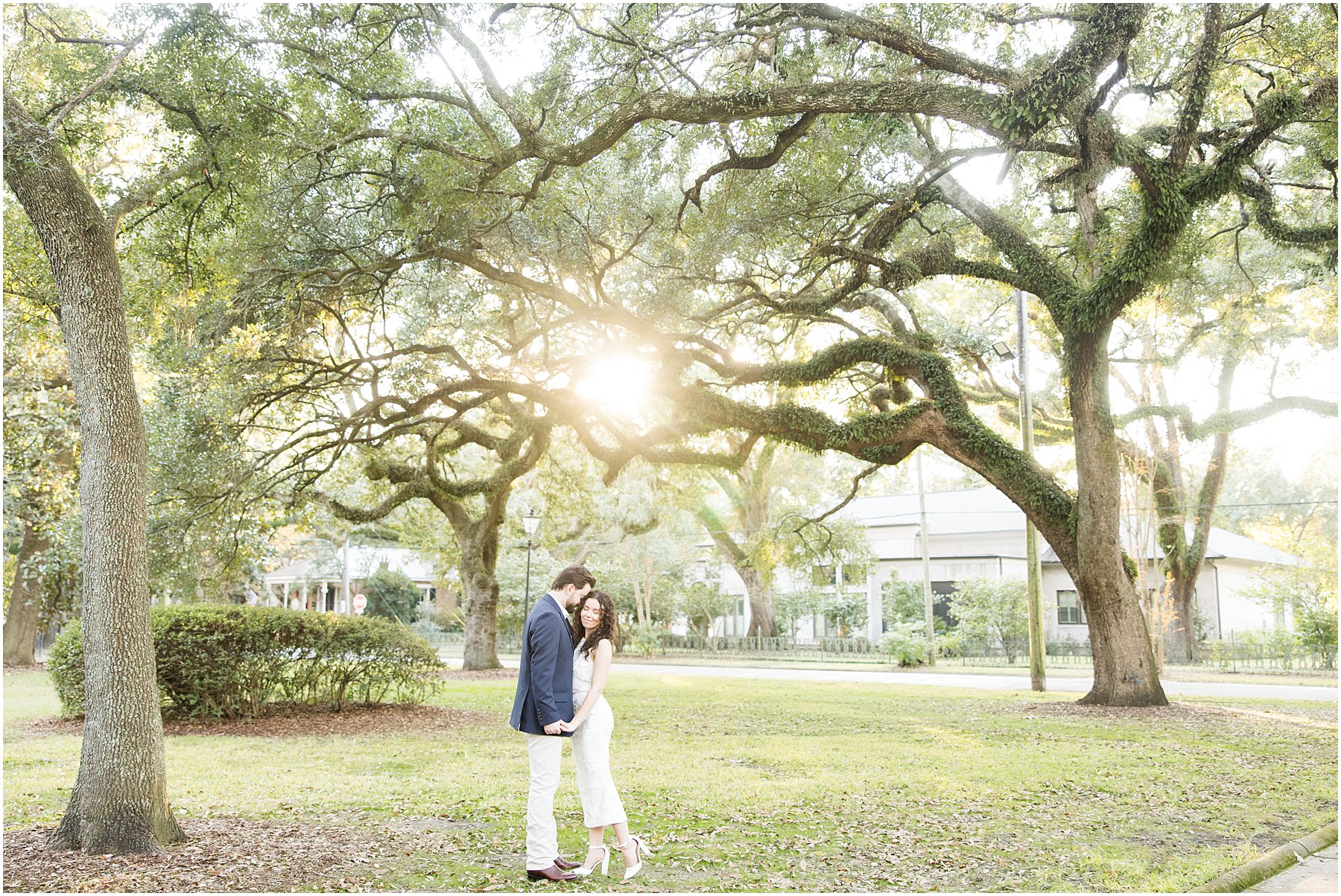
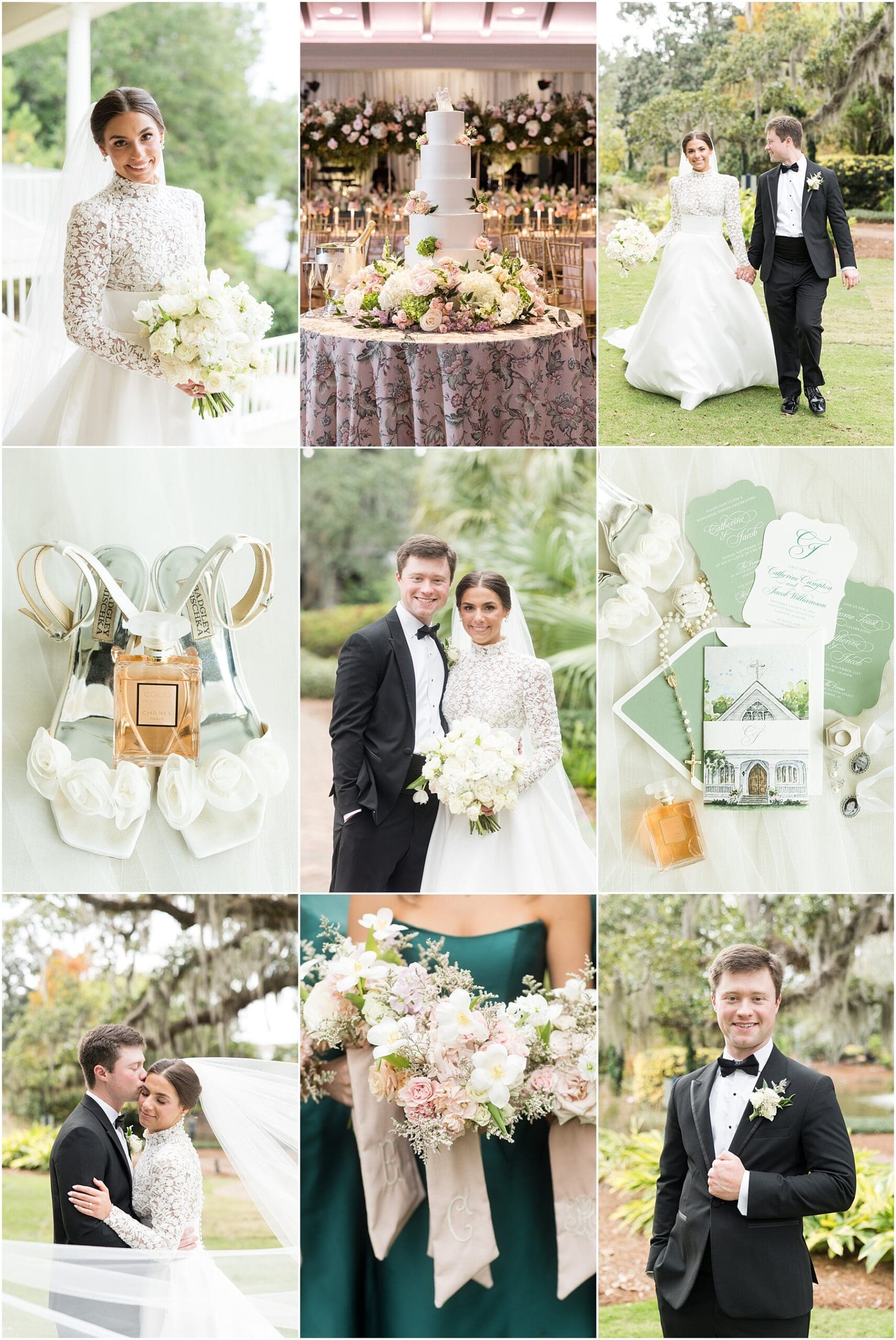
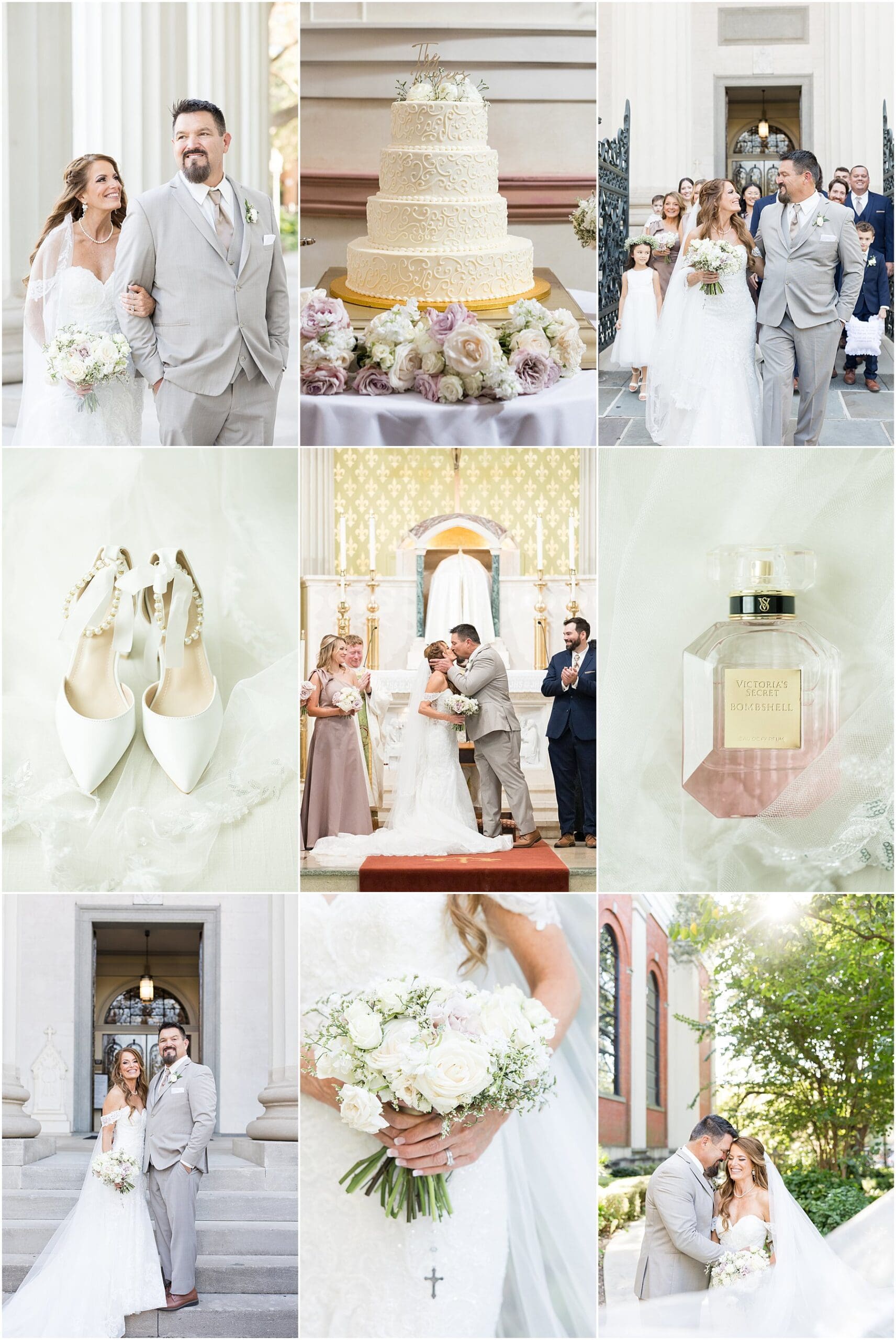
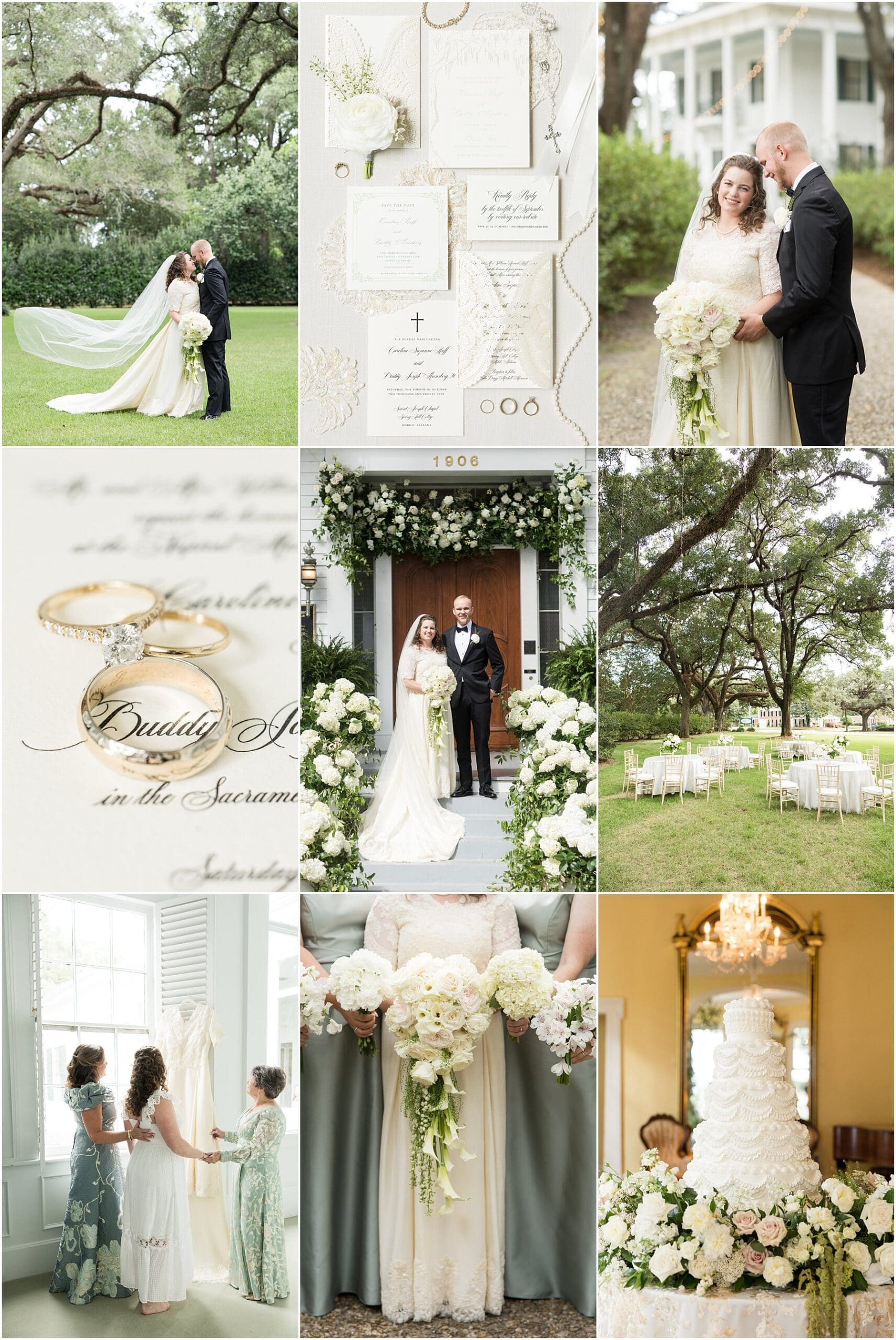
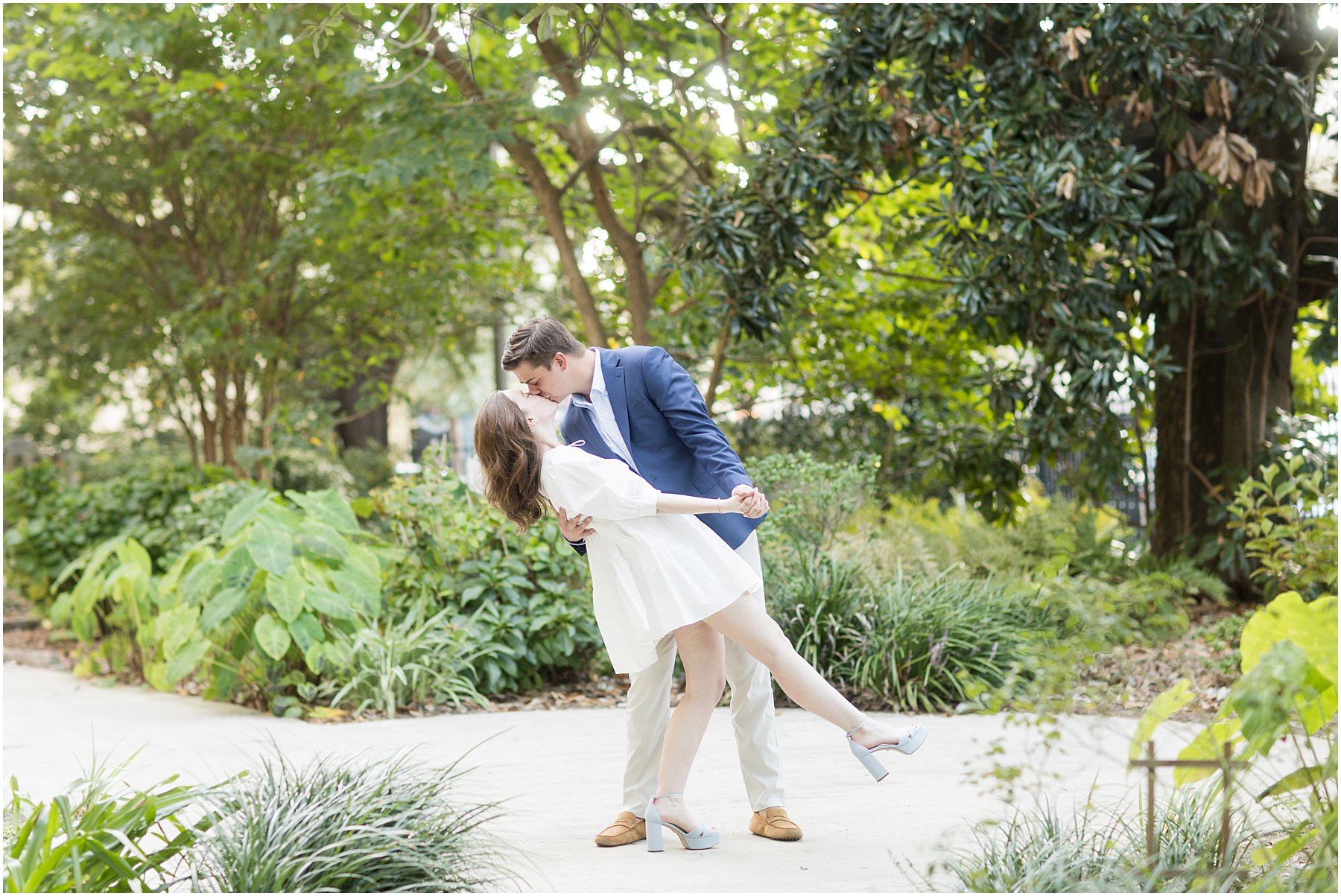
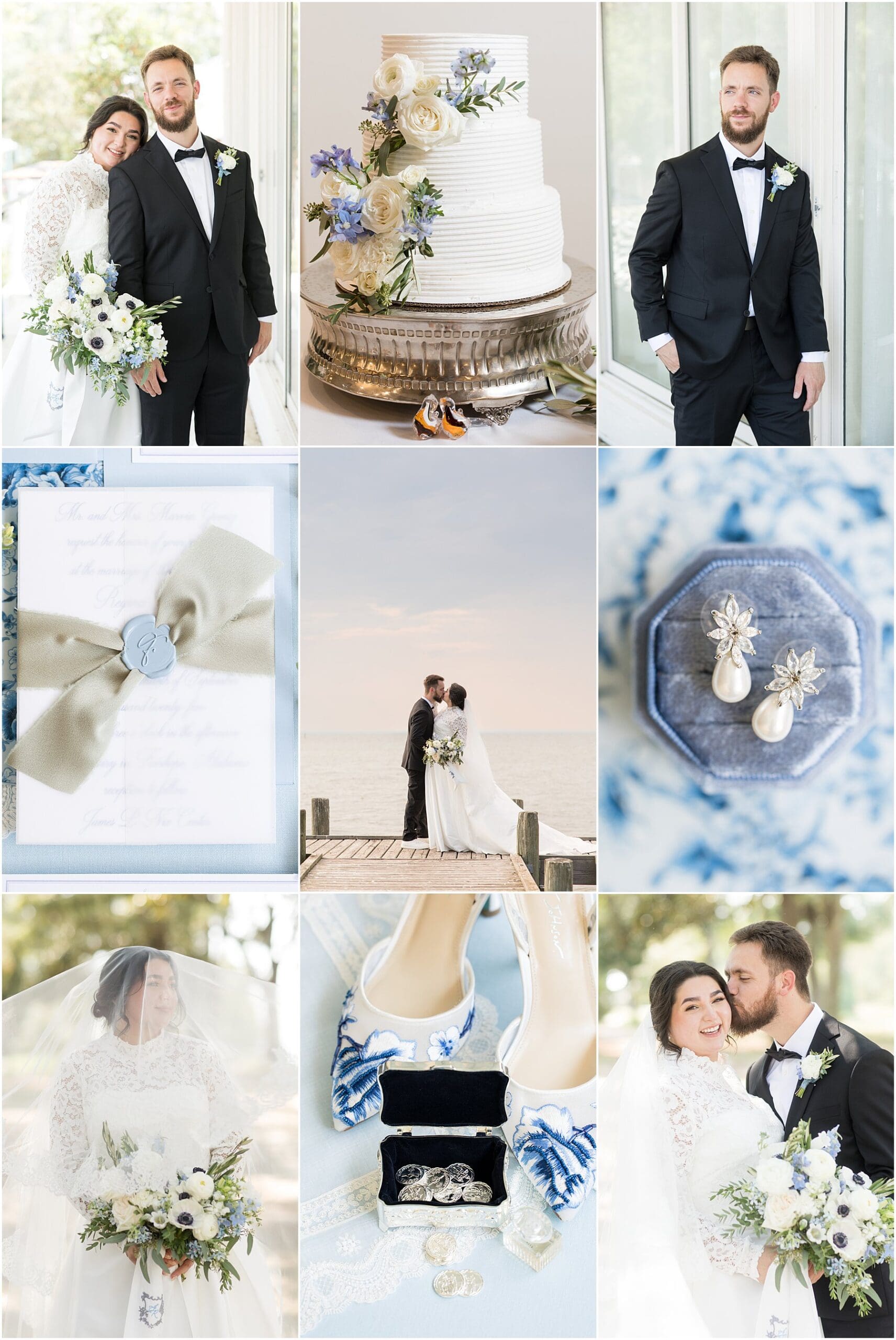
add a comment
+ COMMENTS